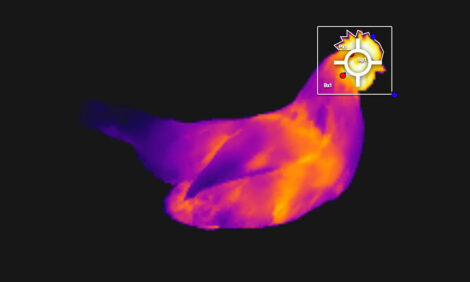



Effects of DMG-Na on Apparent Digestibility, Vitamin E Absorption and Serum Proteins in Broilers fed a High- or Low-fat Diet
In two studies to examine its effects as a dietary supplement on apparent digestibility and performance of broiler chickens fed two levels of dietary fat, N,N-dimethylglycine sodium salt (DMG-Na) improved nutrient digestibility in the grower phase and tended to do so in the finisher phase.A study to assess the effect of supplementation with sodium salt of N,N-dimethylglycine (DMG-Na) on apparent digestibility in broiler chickens fed low- and high-fat diets is published in Poultry Science by researchers in Italy and Belgium.
L. Prola of the University of Turin and co-authors there and at the Institute of Agrarian Biology and Biotechnology in Pisa and Taminco in Ghent explain that in their study, 28 one-day-old broiler chickens were fed one of the dietary treatments: a low-fat diet (LF) or a high-fat diet (HF) supplemented with or without 1,000 mg/kg of DMG-Na.
Body weight and feed consumption were recorded at 14 and 35 days of age. Average daily growth, daily feed intake, and feed conversion ratio were calculated. The AD of dry matter, organic matter (OM), crude protein, total fat and α-tocopheryl-acetate were assessed by two digestibility trials (at 18–21 and 32–35 days, respectively).
Serum protein and plasma α-tocopherol concentrations were assessed at 35 days of age.
Final bodyweight, feed intake, carcass, breast and spleen weight were higher in groups fed LF than HF diets (P=0.048, P=0.002, P=0.039, P<0.001 and P=0.007, respectively).
Liver weight was increased in DMG-Na-unsupplemented groups (P=0.011) for both fat levels.
During the first digestibility trial (18 to 21 days of age) the apparent digestibility of dry matter (P=0.023), organic matter (P=0.033), crude protein (P=0.030), and α-tocopheryl-acetate (P=0.036) was higher in the DMG-Na-supplemented group than control.
Digestibility of total fat was increased by DMG-Na supplementation in the LF groups (P=0.038).
A trend for improvement of digestibility was observed during the second digestibility trial (32 to 35 days) for dry matter (P=0.089), organic matter (P=0.051) and crude protein (P=0.063) in DMG-Na groups.
Total serum proteins (and relative fractions) were positively influenced by DMG-Na supplementation both in LF and HF diets (P=0.029). Plasma α-tocopherol concentration was higher in groups fed LF than HF diets (P<0.001).
In the conclusions, Prola and co-authors report that the highest serum albumin and total protein observed in broilers fed DMG-Na-supplemented diets could be related to improved protein digestibility compared with unsupplemented groups and to increased availability of amino acids precursors for protein synthesis. This could lead to an optimisation of the oncotic pressure and, consequently, ascites prevention.
The researchers added that the higher plasma α-tocopherol observed in chickens fed LF diets could be a consequence of reduced polyunsaturated fatty acid (PUFA) ingestion in birds fed LF diets, and a consequent sparing effect on vitamin E.
Reference
Prola L., J. Nery, A. Lauwaerts, C. Bianchi, L. Sterpone, M. De Marco, L. Pozzo and A. Schiavone. 2013. Effects of N,N-dimethylglycine sodium salt on apparent digestibility, vitamin E absorption, and serum proteins in broiler chickens fed a high- or low-fat diet. Poult. Sci. 92(5):1221-1226. doi: 10.3382/ps.2012-02465
June 2013








